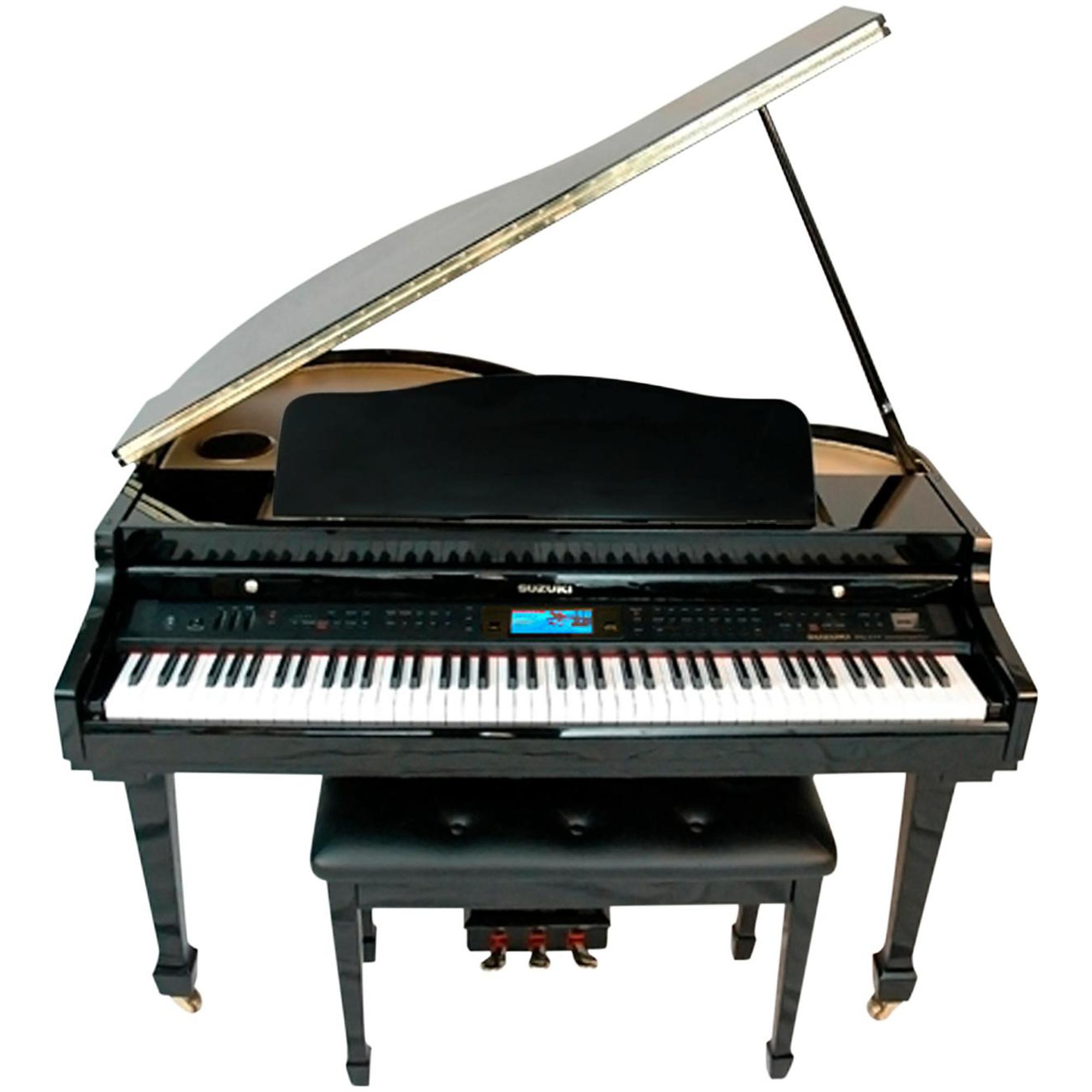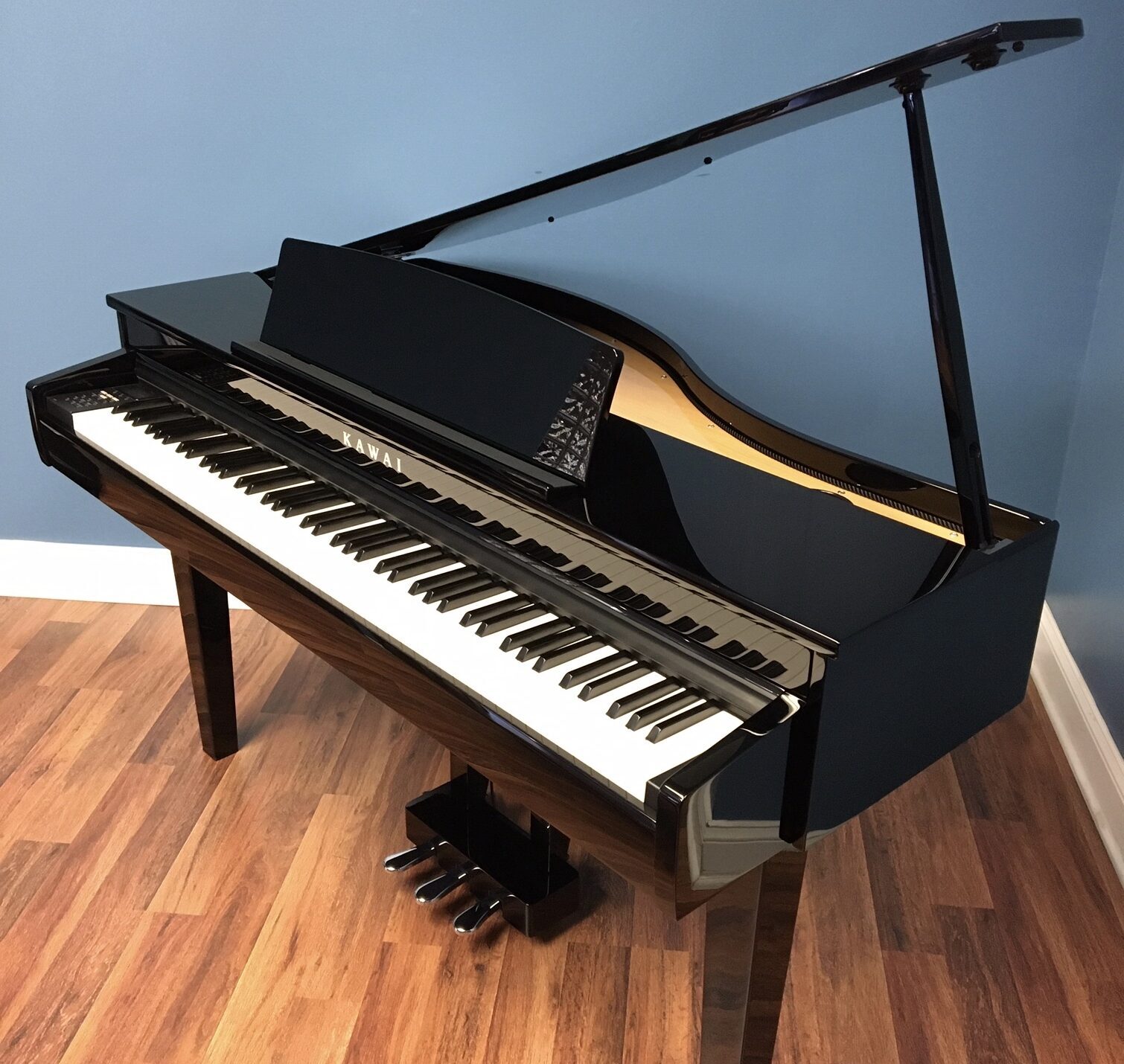A digital grand piano is an electronic instrument that simulates the sound and feel of an acoustic grand piano. It combines traditional design with modern technology for a realistic playing experience.
Digital grand pianos offer musicians the elegance of a classic grand piano without the extensive maintenance and tuning that acoustic pianos require. They come equipped with a variety of sounds and features, such as weighted keys, multiple voices, and recording capabilities.
These instruments are ideal for both practice and performance, fitting seamlessly into small spaces and often being more affordable than their acoustic counterparts. With advancements in sound sampling and key action technology, digital grand pianos provide an accessible option for players seeking the grand piano experience with added technological benefits.
Credit: www.popsci.com
The Evolution Of Pianos To Digital
The story of pianos is a fascinating journey. It stretches from grand halls of the past to the digital age. This transformation has enriched the musical landscape. Let’s dive into how pianos have evolved into digital wonders.
From Acoustic Roots To Digital Fruits
Acoustic pianos have deep roots. They have been around for centuries. Digital grand pianos are quite new. They blend tradition with innovation. Their history is short but impressive.
The leap from strings to electronics changed everything. Musicians began exploring new sounds. The journey has been incredible. Digital pianos now offer countless possibilities.
Technological Advances Shaping Instruments
- Sound Sampling: High-quality recordings of real pianos are used.
- Weighted Keys: They mimic the feel of acoustic piano keys.
- Connectivity: USB and MIDI ports connect to devices.
Each technological stride has made digital pianos more authentic. They deliver an experience that rivals acoustic pianos. Yet, they offer more versatility. Advances in technology have shaped these instruments. They have turned them into a musician’s dream.
Anatomy Of A Digital Grand Piano
The ‘Anatomy of a Digital Grand Piano’ unveils the remarkable blend of traditional design and modern technology. These instruments mirror the elegant shape and rich sound of their analog counterparts, the grand pianos, while integrating innovative features. Let’s delve into the essential elements that compose these technological masterpieces and understand what sets them apart.
Key Components And How They Mimic Acoustics
At the heart of a digital grand piano lies a sophisticated array of components that work together to replicate the acoustic piano experience. Each keystroke on a digital grand piano activates an intricate mechanism tailored to emulate the hammer striking the strings in an acoustic piano.
- Weighted keys simulate the heft and resistance of real piano keys.
- Touch sensitivity ensures volume changes just like an acoustic piano.
- Sound engine uses samples from high-end grand pianos to produce authentic tones.
- Pedals provide the same sustain, sostenuto, and soft control for nuanced playing.
Advanced sensors detect the speed and depth of key presses, with many models offering a graded hammer action for the utmost precision, closely mirroring the haptic feedback of traditional grand pianos.
The Digital Advantage: Features And Flexibility
Beyond replicating the classic piano feel, digital grands boast a suite of features that elevate the musician’s experience.
- Versatile sound libraries allow players to explore a range of instruments.
- Connectivity options enable easy recording and integration with music apps.
- Headphone jacks provide for silent practice sessions, anytime.
- Compact design ensures a smaller footprint than traditional grands.
With memory banks to store custom settings and USB ports for data transfer, digital grand pianos surpass their acoustic ancestors in functionality. Players can enjoy recording capabilities, built-in metronomes, and even educational tools.
The Sound Of Innovation: Audio Technology
Digital grand pianos are modern marvels that combine traditional piano aesthetics with the latest audio technology. They deliver stunning sound that can rival acoustic pianos. Let’s dive into how this innovative sound gets crafted.
Sampling And Synthesis: Crafting Digital Tones
Digital grand pianos use advanced techniques to create their rich and dynamic tones. Two key processes stand out: sampling and synthesis.
- Sampling involves recording real piano sounds at different velocities.
- Synthesis is the digital creation of sound, mimicking the way an acoustic piano generates tone.
Digital pianos store these samples and synthesize sounds, which they play back when keys are pressed. This technology enables pianists to experience realistic sounds across various musical genres.
Speakers And Amplification Systems
The quality of a digital grand piano’s sound often relies on its speakers and amplifiers. These components are vital for projecting the sampled and synthesized tones. Speakers must reproduce the nuances of the piano’s sound accurately, while amplifiers provide the needed power without distortion.
| Feature | Description |
|---|---|
| Multi-Speaker Systems | Deliver sound throughout the entire piano for an immersive experience |
| Amplifier Wattage | Determines the volume and power the piano can produce |
| High-Fidelity Sound | Ensures that the output is clear and true to the original tone |
By incorporating these components, digital grand pianos are able to offer beautiful, amplified piano music suitable for living rooms and concert halls alike. The audio technology behind these instruments continues to evolve, bringing the joy of piano music into the digital age.
Touch And Feel: Keyboard Action
The heart of any digital grand piano lies in its keyboard action. A great action can make all the difference. It brings the instrument to life. Today, let’s dive into the tech that makes digital piano keys feel real.
Graded Hammer Action For Authenticity
Real pianos have a unique feel. When you press a key, a hammer strikes the string. This is heavy in low notes and lighter in high ones. Digital grands mimic this with Graded Hammer Action. It makes playing feel just like an acoustic piano.
- Heavier keys in the bass section
- Lighter keys in the treble section
- Realistic touch across the keyboard
Responsive Dynamics: Sensors And Velocity
Digital pianos detect how fast you press a key. This is called velocity. Faster strikes produce louder sounds. This is key for expressive playing.
Digital pianos use sensors to measure this. More sensors mean more accuracy. Here’s a simple look at how they work:
- Press a key, and you move the hammer inside.
- Sensors measure key speed.
- The piano’s sound engine turns this into music.
Practical Advantages For Modern Musicians
The digital grand piano stands as a game-changer for musicians everywhere. Features like portability and volume control not only offer convenience but also open new possibilities in music creation and practice. These instruments cater to the modern lifestyle, where flexibility and functionality are key.
Portability And Space Efficiency
Bulky and heavy traditional pianos no longer fit in tight urban living spaces or the mobile lives of today’s musicians. A digital grand piano, known for its easy transport and setup, becomes a preferred option. You can carry it to gigs, studios, or classrooms without breaking a sweat.
- Lightweight design: Easily move around or take on the road.
- Compact structure: Fit into smaller spaces at home or studio.
- No tuning required: Save time and cost on maintenance.
Volume Control And Headphone Practice
Living in a busy household or apartment building often means keeping the noise down. With a digital grand piano, you can adjust the volume to suit any situation. Late-night practice sessions become a reality as you can connect headphones and play without disturbing others.
| Feature | Benefit |
|---|---|
| Adjustable volume | Practice without worry at any time of day. |
| Headphone jack | Keep practice private and avoid noise complaints. |
Whether it’s to not disturb roommates or to focus on every detail of the performance, these features prove essential. Digital grand pianos enhance the flexibility and quality of musical practice, making them an invaluable tool for today’s musicians.

Credit: www.guitarcenter.com
Choosing Your Digital Grand Piano

Credit: freeburgpianos.com
Can a Digital Grand Piano Replicate the Sound and Feel of a Traditional Grand Piano?
A digital grand piano can replicate the sound and feel of a traditional grand piano by using advanced technology and high-quality samples. Through sophisticated sound sampling and key action simulation, digital pianos are able to closely emulate the acoustic experience of playing a traditional grand piano. This is how digital pianos work.
Can a Digital Grand Piano Be Considered a Baby Grand Piano?
A digital grand piano offers a wide range of features and versatility, but it differs from traditional acoustic models. While it can emulate the sound and feel of a baby grand, the dimensions of a baby grand piano provide a distinct aesthetic and tactile experience that a digital model cannot fully replicate.
Frequently Asked Questions For What Is A Digital Grand Piano
What Is The Difference Between A Grand Piano And A Digital Piano?
A grand piano, an acoustic instrument with strings and hammers, produces sound physically, offering rich tonal quality. Digital pianos, electronic devices with sampled sounds, are compact, require less maintenance, and often include various features like headphones support and built-in teaching tools.
Are Digital Grand Pianos Worth It?
Digital grand pianos offer excellent sound and touch quality, often at a lower cost than traditional grand pianos. They require minimal maintenance and are ideal for space-saving needs, making them a valuable investment for both beginners and experienced players.
What Is The Difference Between A Piano And A Digital Piano?
A piano is an acoustic instrument with hammers striking strings, creating organic resonance. A digital piano produces sound electronically and often includes various tone options and volume control.
How Does A Digital Grand Piano Work?
A digital grand piano combines weighted keys with electronic sound technology. It simulates acoustic pianos by generating tones through digital samples. The keys trigger these samples, allowing for various sounds and dynamic playing without physical strings or hammers inside the instrument.
Conclusion
Embracing the fusion of tradition and technology, digital grand pianos offer a remarkable experience. Perfect for musicians at all levels, they deliver astounding sound quality and versatility. Choose one for space-saving convenience without compromising on rich acoustics. Let a digital grand piano echo your passion with every note.
